All about styrofoam facade decor
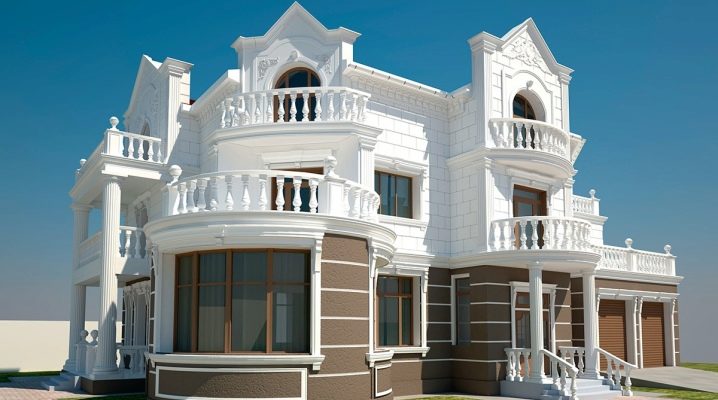
Stucco molding is a timeless, contemporary decor for both historic and modern buildings. Today, heavy and complex gypsum can be replaced with lightweight, inexpensive and readily available foam. The most incredible thing is that no one will notice the difference. After all, decorative elements made of foamed plastics will be covered with paint or plaster immediately after installation, and they will resemble painted concrete or plaster in appearance and even tactile sensations.
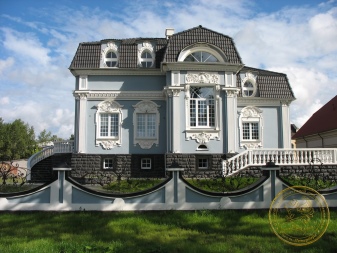

Advantages and disadvantages
Buildings with plaster decor have survived to this day through the centuries. And how long the foam will last is hard to say.
It began to be used after 1951, when styrene was polymerized by adding pentane to it. Since then, no one has experimented with the longevity of the innovative material.
But one thing is clear - damaged, time-worn or just boring facade decor today is easy and inexpensive to replace by ordering from a company or purchasing your favorite architectural elements from a hardware store. These contradictory qualities of polystyrene contain pros and cons at the same time. Let's try to sort everything out on the shelves, separate advantages from disadvantages. Let's start with the positive characteristics.
- Styrofoam for outdoor decoration is almost weightless, it does not give additional load to the building and is suitable even for houses built on a light foundation with a capricious wall covering.
- The decorative elements come in a wide range of sizes and shapes, and a variety of artistic performances are noted.
- Artificial stucco molding is easy and quick to assemble.
- The material does not decay, is not susceptible to fungus and mold.
- Polyfoam tolerates any weather conditions and temperature fluctuations, therefore it is suitable for use in all regions of the country.
- A continuous coating of the surface of the walls can add additional sound and thermal insulation properties to them.
- The material, which belongs to the class "A", has fire-resistant characteristics.
- Facade decor made of polystyrene is much cheaper than gypsum stucco molding, and in large-scale use it significantly reduces the cost of project decoration of a building.
- The service life of the foam itself is small, but due to acrylic and other types of coating, it is postponed for tens of years.
- The use of expanded polystyrene in the decoration of the facade allows you to support any architectural style of the building. This flexible material can be used to make exact copies of antique statues and artistic elements from different historical eras.

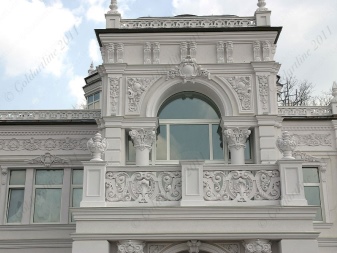
There are few negative points in using foam decor, but you also need to know about them.
- The service life of plastic facade elements is shorter than that of plaster or concrete products. But they can always be replaced.
- The material itself is fragile; care should be taken during installation. But after installation and treatment of surfaces with a paint layer, it acquires sufficient strength and reliability. So that the expanded polystyrene does not become fragile again, its condition must be monitored, periodically treated with special compounds.


Facade elements overview
Almost all outdoor decor elements can be made of reinforced foam material. They are used to decorate windows, doors, corners, balconies, bay windows, wall surfaces. The list of parts for decorating facades is quite large.
Columns
Large elements in the form of columns or semi-columns, made of polymers, are not a load-bearing supporting structure, they are only used to decorate the building. Their sections can be round, semicircular, square, polyhedral. They vary in size and style.


Pilasters
Elements that make up a decorative ledge on the wall, conventionally depicting a column. The shape of the pilaster is more embossed than voluminous.
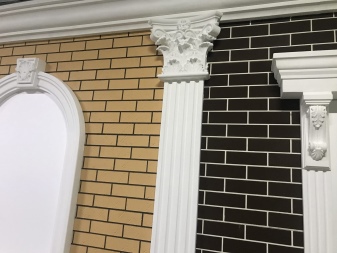

Facade cornice
It can be located under a roof or between floors. The size of the profile should be in harmony with the scale of the building itself.
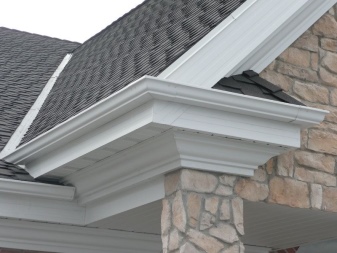

Horizontal profiles
Unlike cornice elements, horizontal profiles play a dividing role, they divide the plane of the walls into level parts.


Arches
Curved decorative structures are used between columns, above windows and doorways.


A large variety of other foam elements are used to decorate buildings. These are modilions, flutes and portals, porticoes, consoles, rustication of the facade plinth.

Top manufacturers
In the production of facade elements from expanded polystyrene, computer graphics are used, with its help ideal forms of decor are achieved.
The parts are reinforced with acrylic fiberglass mesh, which gives strength to the material. Then the surface is covered with a mixture of cement and special glue. Externally, architectural elements take on the appearance of real stucco molding, stone statues, concrete columns.
You can order the necessary facade decor for your home directly from the manufacturer. We offer an overview of companies that have proven themselves well in the production of these products.

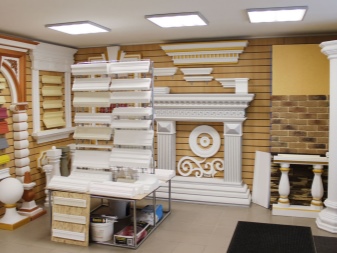
"Architek"
The decor of the enterprise is made of high-strength polystyrene foam, taking into account modern technologies. The products have a marble-acrylic coating, which guarantees the strength and durability of the material, and are distinguished by an aesthetically attractive appearance.
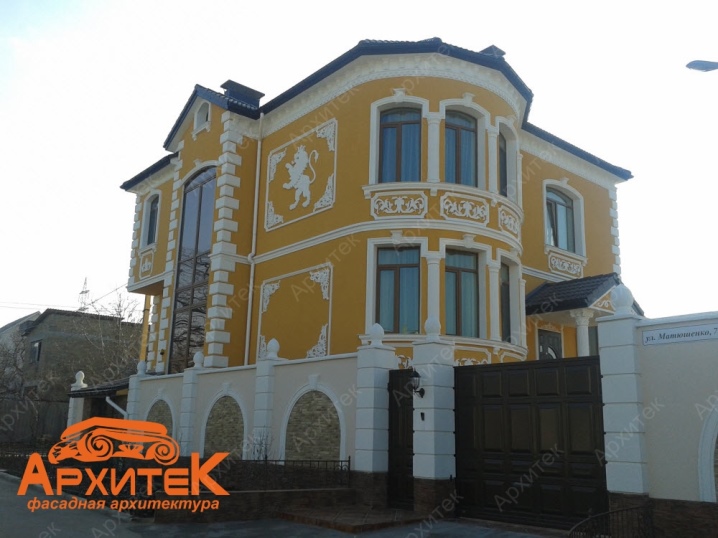
"Penotech"
For 16 years, a large Moscow company has been producing foam plastic products - facade decor, landscape sculptures. The company operates on imported materials and has a large assortment of architectural decor items.

"Primo Decor"
The products of this company have been known in the domestic market for 6 years. The company uses in its work durable foam of the PSB-S-25F brand. Facade elements are covered with Turkish acrylic paint Bianca Boya. The company provides a selection of its products from 270 samples.

Installation nuances
Facade decor made of foam plastic is lightweight, easy to assemble and allows you to carry out work on the installation of architectural elements on the facade of the building yourself. The main thing is not to do this in the fall or winter, only in a warm period, when the glue can dry out and fix the decor well on the walls of the house.
Before installation, it is necessary to make a sketch of the facade indicating the number, size and shape of decorative elements.
You need to know exactly how the wall surface will look when using certain decor details. To do this, it is better to use free computer programs ("Alta-Planner", "Alta-Profile"), which will help you see your facade in 3-D-volume and make the right decision.

When the drawings are ready and materials are purchased, they start work in the following sequence.
- Before fixing the decor strips, you need to prepare the surface for it. Since the elements are set on glue, in order for the adhesion to be perfect, the place of the wall for the decor must be flawlessly even and smooth. The unevenness of the plaster is removed, with the help of a solution (if necessary) the corresponding part of the wall is leveled.
- A special adhesive is applied to the back of the decorative elements, then they should be tightly applied to the surface.
- Dimensional parts (columns, caryatids), in addition to glue, need additional fasteners; fixation is carried out using anchors and embedded elements, achieving full adhesion to the surface.
- At the end of the installation, all butt joints are treated with sealants, the excess is carefully removed and rubbed over.
- At the last stage, the decor is primed and covered in a few words with high-quality water-based acrylic paints. It is the staining that turns the foam facade decorations into imitations of stone or concrete.

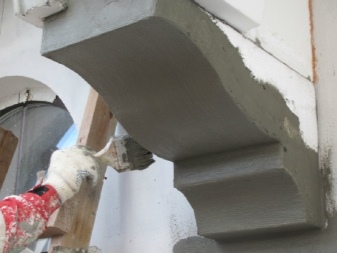
Beautiful examples
We have prepared for you a selection of beautiful decorative elements created on the basis of polystyrene and decorating the facades of buildings.
- The building contains pilasters, rustic materials, platbands, cornices and horizontal profiles made of expanded polystyrene.

- Decorative moldings made of foamed plastics.

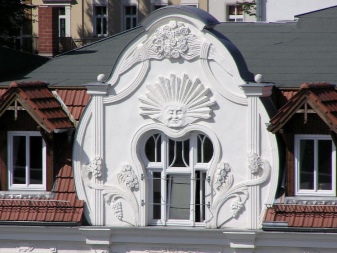
- Spectacular styrofoam-based home decoration.

- Nice contrasting use of white synthetic decor on the red façade.

- Facade patterns are used to style the building.
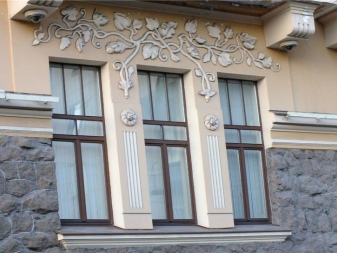

- Artistic decoration of windows using foam plastic.














The comment was sent successfully.